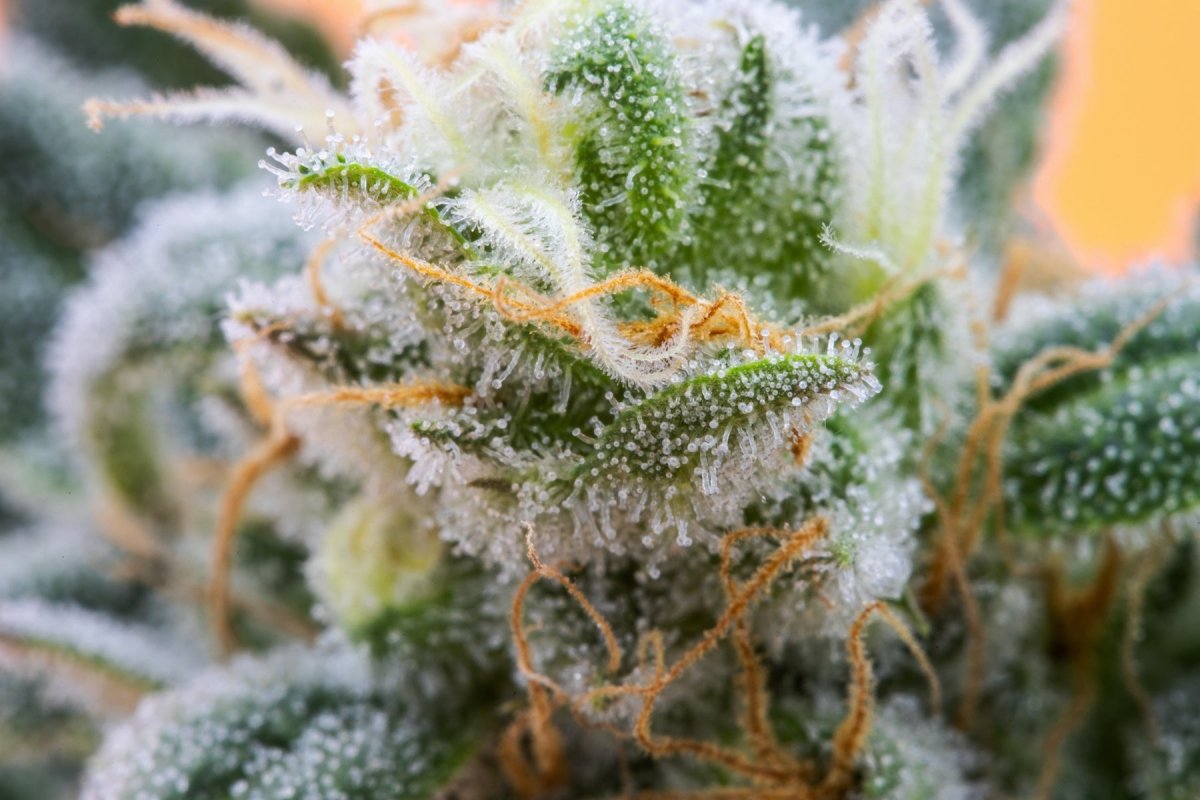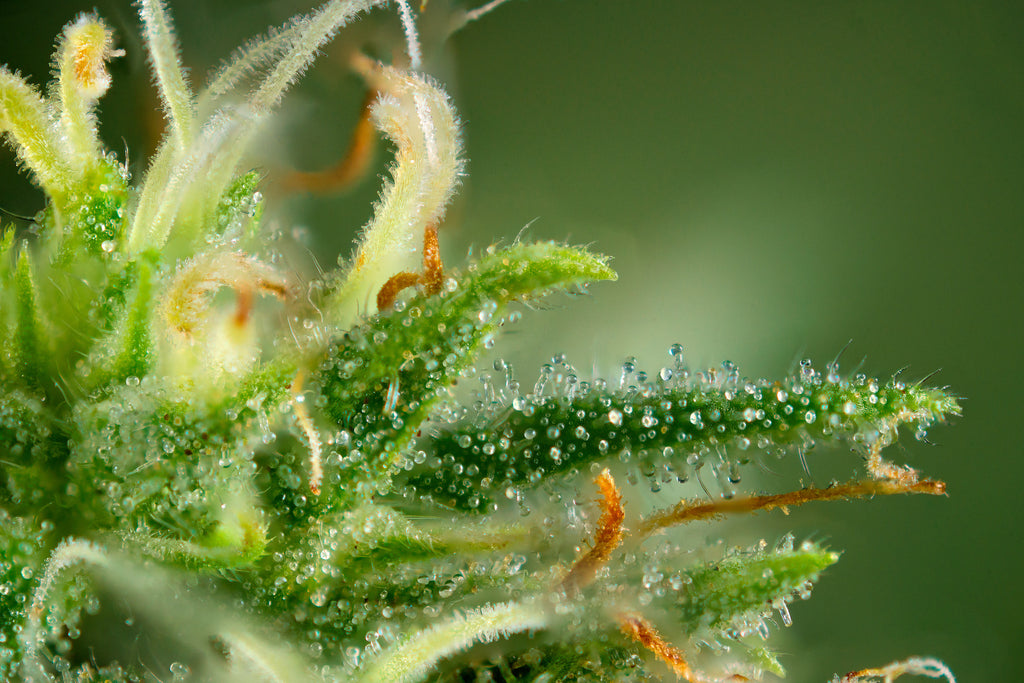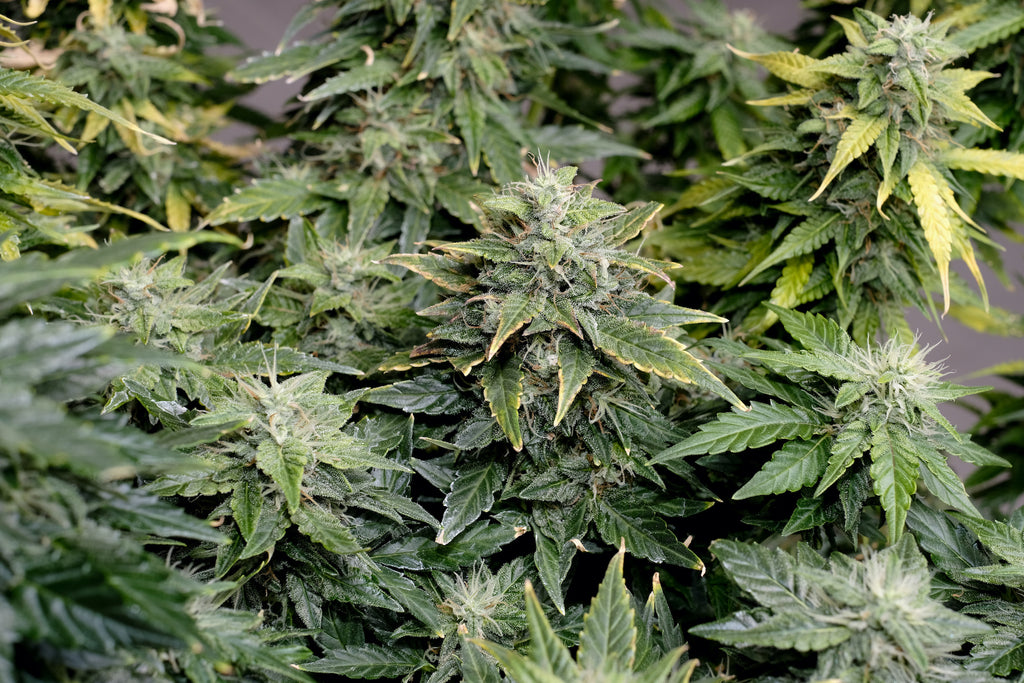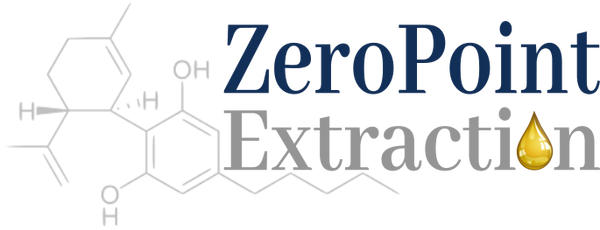Recent posts
-

-
 What Are THCa Diamonds?October 14, 2025
What Are THCa Diamonds?October 14, 2025 -
 Delta 9 Gummies GuideOctober 8, 2025
Delta 9 Gummies GuideOctober 8, 2025 -
 Head High vs Body High: A Guide to Cannabis EffectsOctober 1, 2025
Head High vs Body High: A Guide to Cannabis EffectsOctober 1, 2025 -
 What is THCA Crumble?September 22, 2025
What is THCA Crumble?September 22, 2025 -
 10 Ways to Elevate Self-Care Awareness MonthSeptember 14, 2025
10 Ways to Elevate Self-Care Awareness MonthSeptember 14, 2025

What Are Trichomes?
By Zero Point
Table of Contents
Hemp, a variety of the Cannabis sativa plant species, is cultivated for its fiber, seeds, and oil, which are used in a multitude of products ranging from textiles and nutrition to medicinal products. Within the burgeoning cannabis industry, hemp stands out not only for its diverse applications but also for its unique botanical features, particularly the trichomes. Trichomes are tiny, crystal-like structures that coat the surface of hemp plants, playing a crucial role in their vitality and the quality of the derived products. This blog post delves into the fascinating world of hemp trichomes, shedding light on their structure, importance, and applications in today's market.
Understanding Hemp Trichomes

Definition and Description
Trichomes are microscopic, hair-like outgrowths on the epidermis of plants, notably visible on hemp. They are the plant's natural defense mechanism against pests and environmental stressors and are the production sites for cannabinoids, terpenes, and flavonoids – compounds responsible for the plant's aroma, flavor, and therapeutic properties.
Structure of Trichomes
Trichomes on hemp plants can be broadly categorized into glandular and non-glandular types. Glandular trichomes, which are of primary interest, contain resin glands that produce and store the valuable cannabinoids like CBD (Cannabidiol) and THC (Tetrahydrocannabinol, although in much lower concentrations in hemp compared to marijuana), along with other phytochemicals.
Types of Trichomes
- Bulbous trichomes: The smallest type, barely visible to the naked eye, scattered across the surface of the plant.
- Capitate sessile trichomes: Slightly larger, these contain a head and a stalk, contributing significantly to cannabinoid production.
- Capitate-stalked trichomes: The largest and most abundant type on cannabis plants, these are the primary source of cannabinoids and terpenes.
The Importance of Trichomes
Trichomes and Cannabinoid Production
The primary reason trichomes are revered in the hemp industry is their role in producing cannabinoids, the chemical compounds responsible for the therapeutic and medicinal benefits associated with hemp. CBD, known for its anti-inflammatory, analgesic, and anxiety-reducing properties, is synthesized in these tiny structures. Trichomes also produce terpenes, the aromatic compounds that give hemp its distinctive scent and contribute to its therapeutic effects through the "entourage effect," where they work synergistically with cannabinoids to enhance the plant's overall benefits.
Plant Defense Mechanism
Beyond their role in producing valuable compounds, trichomes serve as a protective layer for the hemp plant. Their sticky surface traps pests and acts as a barrier against harmful UV rays and wind-borne fungal spores. This natural defense mechanism helps ensure the plant's survival and the quality of the hemp produced.
Significance for Consumers and Producers
For consumers, the presence and condition of trichomes are indicators of product quality and potency. Producers, on the other hand, consider trichomes in determining the optimal harvest time to ensure maximum cannabinoid yield and product efficacy. The harvesting and processing of trichomes are crucial stages in the production of high-quality hemp extracts and products.
The Life Cycle of Trichome Production

Trichome production in hemp plants follows a fascinating life cycle that is closely tied to the plant's overall growth stages. Understanding this cycle is crucial for cultivators aiming to optimize the yield and quality of the cannabinoids and terpenes these trichomes produce.
Germination and Seedling Stage
The life cycle of trichome production begins as soon as the hemp seed germinates. While trichomes are not produced during the earliest phases of a hemp plant's life, the foundation for their development is laid during the seedling stage. At this point, the plant focuses on establishing a robust root system and foliage.
Vegetative Stage
As the hemp plant enters the vegetative stage, it experiences rapid growth in size and biomass. Although trichome production is still minimal, the plant starts forming the structures that will later develop into full-fledged trichomes. This stage is critical for establishing a healthy plant capable of supporting abundant trichome production in later stages.
Flowering Stage
The flowering stage marks a significant increase in trichome production. This phase begins when the plant receives fewer hours of daylight, signaling the start of the reproductive cycle. Trichomes primarily develop on the surface of the flowers (buds) and surrounding foliage, producing and storing cannabinoids and terpenes. The quantity and quality of trichomes produced during this stage are influenced by various factors, including genetics, lighting, and nutrition.
Trichome Maturation
As the flowering stage progresses, trichomes undergo maturation, changing in appearance from clear to cloudy and, eventually, to an amber color. This color transition indicates the peak production of cannabinoids and terpenes, signaling the optimal time for harvest. The maturation of trichomes is a delicate balance; harvesting too early or too late can affect the potency and flavor profile of the final product.
Harvest and Post-Harvest
The harvest stage concludes the life cycle of trichome production. Once harvested, the trichomes' metabolic activities cease, but the cannabinoids and terpenes within remain potent. Proper post-harvest processing, such as drying and curing, is essential to preserve these compounds and ensure the highest quality product.
Cultivation Techniques to Enhance Trichome Production
Advanced cultivation techniques can influence the life cycle of trichome production, enhancing both the quantity and quality of the trichomes. These techniques include controlled stress methods (e.g., slight adjustments in temperature, light, and water stress) to stimulate trichome production, as well as the selection of high-resin genetic strains and optimized nutrient regimens.
Harvesting Trichomes
Techniques for Trichome Extraction
Harvesting trichomes is a delicate process that requires precision. Techniques vary from simple hand-trimming to using specialized machinery that shakes or brushes the trichomes off the plant. Solvent-based extraction methods, such as using CO2 or ethanol, can also separate trichomes from plant material, allowing for the production of concentrates like oils, waxes, and resins.
The Importance of Timing in Trichome Harvesting
Timing is critical in trichome harvesting. The trichomes' color and opacity serve as indicators of their maturity and cannabinoid content. Clear trichomes indicate immaturity, while milky white or amber trichomes signal peak maturity and maximum cannabinoid concentration. Harvesting at the right moment ensures the highest quality and potency of the final product.
Applications of Hemp Trichomes
Medical and Therapeutic Uses
The cannabinoids and terpenes produced in trichomes have been extensively researched for their potential health benefits. CBD, in particular, is used in various medical treatments and wellness products for its efficacy in managing pain, inflammation, anxiety, and seizure disorders, among other conditions.
Industrial and Recreational Applications
Beyond their medicinal value, trichomes contribute to the recreational and industrial appeal of hemp. The terpenes are integral in creating the aromatic diversity found in different hemp strains, influencing consumer preferences. Industrially, the biomass left after trichome extraction is utilized in producing textiles, biofuels, and building materials, showcasing the plant's versatility.
Future Potential and Ongoing Research
Research into hemp trichomes continues to uncover new cannabinoids and terpenes with potential therapeutic benefits. Advances in genetic engineering and cultivation techniques aim to enhance trichome production and quality, promising an exciting future for the hemp industry.
Conclusion
Hemp trichomes are microscopic in size but monumental in their impact on the plant's value and versatility. From producing cannabinoids and terpenes to serving as the plant's first line of defense, trichomes are a vital component of the hemp ecosystem. Understanding their structure, importance, and applications offers insight into the complexities of hemp cultivation and the potential of its derivatives. As research progresses, the significance of trichomes in the hemp industry is only set to increase, paving the way for new discoveries and innovations in the field.








